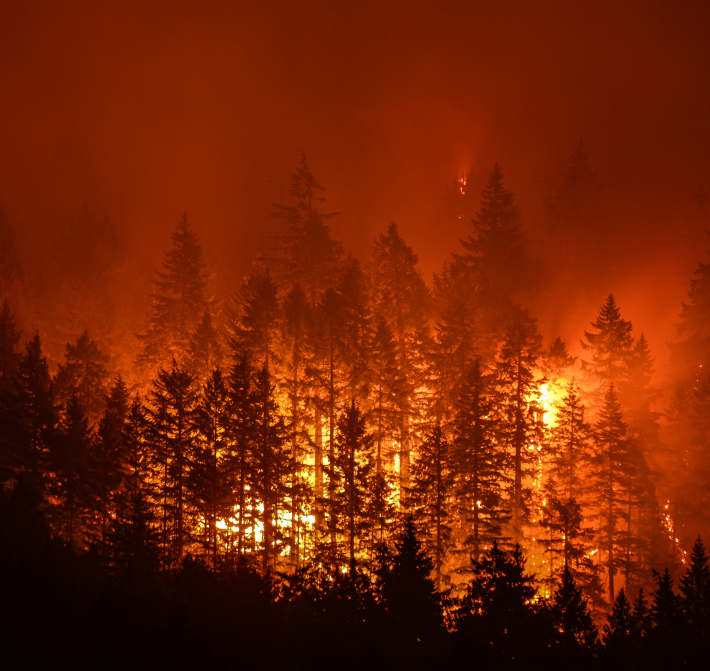
Wildfires became a global phenomenon this year, from Siberia to Spain and Indonesia to the Amazon. Drier climates and a hot summer may have led directly to this, but many have been surprised and even shocked, especially by those in Siberia and the Amazon. Even as Summer draws to a close for the Northern hemisphere, fires seem to be starting in the Australian spring.
Wildfires are not uncommon. In many areas they form part of the natural landscape cycle. Sparked off by lightning, they clear overgrowth and allow the soil to regenerate. In fact, between 75% and 90% of wildfires actually have a human cause; from deliberate industrial forest clearing to simple human carelessness. The term, ‘wildfire’ then is not always so ‘wild’; perhaps an easier way to think of them is any rural inferno that is unwanted, unplanned or uncontrolled.
Natural or not, wildfires can spread to cover huge areas (think thousands of acres) in hours. In the USA, they have been measured moving at 14 miles per hour; this is more than enough to overtake a person escaping on foot! The risks associated with such a sizeable hazard are numerous. Wildlife and forests can suffer hugely in the short-term, with their long-term recovery often interrupted by other human activity. Apart from those directly affected and endangered, people miles away may suffer because of the smoke. In St Paulo, this caused a daytime ‘blackout’. In Europe, flights were widely disrupted.
The National Risk Register maps this onto a UK scale by looking at the domestic wildfire history. Most of these have been in upland, heath and moorland areas, which are often areas of natural beauty and may be sites of special scientific interest – reflecting a particular and valued aspect of their ecology, fauna or flora. In the UK, we don’t yet see that much direct threat to human life. Events like the Saddleworth Moor fires are mainly notable because of the huge amount of resource and effort needed to contain them. This is protecting our environment and preventing harm to people, but at huge and (given that the cause was probably human carelessness) largely avoidable cost.
Other risks include wider environmental damage. This might be watercourse contamination and reduced air quality. This is usually a complicated task to tackle, requiring much monitoring and quality testing long after the blazes are out. The effect on water supply will naturally have cascading secondary impacts, each requiring measures to be in place. Air quality can bring health issues, affecting vulnerable people especially.
As one might expect, there are a range of specific and generic plans to mitigate these risks and their associated impacts, especially in areas with a high incidence of wildfires and where they pose a threat to life. Practical measures, such as firebreaks (pre-burned areas to prevent a fire spreading) are commonplace, but there is also an increase in efforts to anticipate and forecast them – on national and global scales.
Globally, this year has seen a real 'spike' in their number, their extent and the degree of media interest in them. Two of them, in Siberia and the Amazon Basin, were issues of sustained global interest. At the time of writing, fires in Indonesia look like generating similar levels of interest.
The really big questions are now being asked. For example, the Amazon wildfires opened up conversations about deforestation, industrial-scale agriculture, urban expansion, foreign investment and water usage (to name a few!). Even in the UK, where wildfires are small by comparison, they are being linked more closely to climate change and wider issues of environmental management. All of the above might represent the ways in which the next generation’s big risks are beginning to poke their noses higher above the horizon.
This year the UK government has combined emergency (or 'civil protection') risks with security risks for the first time in a single assessment. This should make it easier, hopefully, to see potential linkages between 'acute' risks (like wildfires) and the emerging and evolving 'chronic' risks (especially societal and environmental) with which they may be associated. The former will continue to be the practitioners’ main focus, and quite naturally so. But more visibility of the ways in which these macro chronic risks create the context for the acute ones, can only be a good thing.